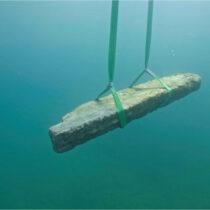In the 17th century, Kastoria was a wealthy city of about 10,000 inhabitants, mostly Christians, who occupied the eastern, northern and southern regions outside the city walls and the area of the Byzantine citadel. Their spiritual and social self-administration was regulated by the Bishopric. The degree of their religious freedom is confirmed by the number of old and new churches, which have been renovated or founded, respectively. According to the surviving monuments, sixteen churches dating from 1605/6 to 1663 are decorated with wall-paintings. Their dedicatory inscriptions together with literary sources reveal social, professional and financial parameters, which allow us to reconstruct the everyday life of Kastoria’s Christian population. In the subject matter of these wall-paintings, 14th-and 15th-century artistic trends prevail from northern and western Macedonia and the adjacent regions, beyond Greece’s present frontiers.These trends however are filtered through the local tradition. In spite of the apparent eclecticism of these works, they show a unity of style which belongs to the so-called “anti-classical” tradition with its various manifestations – The styles of Macedonia, Epirus and that of the “Kastoria Workshop” .
Thirteen different artists can be distinguished -mainly locals with a limited range of intercommunal activity- three of the above belong to the same group to which the decoration of five churches can be assigned. They seem equally well to master the technique of icon painting as well as of monumental painting. The 17th-century wall-paintings of Kastoria are multi-dimentional artistic works of art, which do not mark the end of a school of painting but represent the link between 16th-century conservatism and the 18th century boom of folk art painting. Furthermore, they prove the coexistence of two worlds, the one that is conventionally known as post-Byzantine and the world of modern Greece that was only just emerging at the time.


